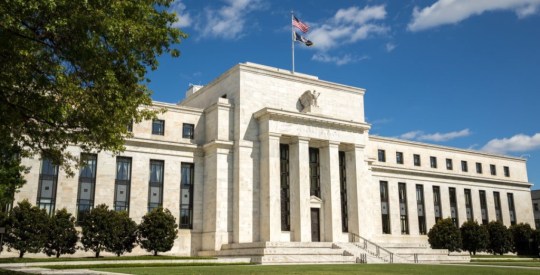Lehman Brothers Holdings Inc. (LEH), filing for bankruptcy? Painful for investors and the huge credit default swap market, certainly. But catastrophic? Nope. That honor may instead fall to teetering insurer American Insurance Group (AIG) — and it’s why we noted in Sunday coverage at HW that a failure at AIG could send much bigger shockwaves through financial markets, in comparison. Try a tsunami’s worth bigger. While the Federal Reserve has reportedly rebuffed the insurer’s earlier request for a $40 billion loan from the central bank, government officials and insurance regulators have urgently been looking to find help — and their search got that much more intense after market close on Monday. Published reports suggested that the world’s largest insurer could find $70 billion to $75 billion in loans arranged by Goldman Sachs Group Inc. (GS) and JPMorgan Chase & Co. (JPM), presumably two financiers with the largest exposure to the troubled insurance company. The collapse of Bear Stearns & Cos. brought the CDS market into view for many investors, perhaps for the first time; and AIG, quite frankly, makes Bear Stearns look like a junior varsity football club when it comes to that largely hidden market, to say nothing of Lehman. Downgrades bring more urgency That search for last-second capital got suddenly more urgent on Monday night, as every major rating agency took some sort of action on the troubled insurer. Standard & Poor’s downgraded its long-term and short-term counterparty ratings on AIG Monday evening; Fitch Ratings dropped similar ratings on AIG earlier in the day, and Moody’s Investors Service cut the insurer’s senior unsecured debt while placing counterparty ratings on watch for a probably downgrade. If that weren’t enough, insurance ratings specialist A.M. Best also downgraded AIG’s key credit ratings. That’s the bad news, and it pushes the insurer closer to the edge of the proverbial abyss. Why? Simply put, AIG sold banks and other investors CDS protection on $441 billion of fixed-income assets, including $57.8 billion in subprime-mortgage related securities. There are likely very few firms with this much exposure into the CDS market — and ratings downgrades can trigger collateral calls from investors, which would in turn likely lead to a massive counterparty default. Which would lead to the end of the universe, to hear some describe it. “Lehman is the warmup to what we will see with AIG,” writes Yves Smith at the blog Naked Capitalism. “If Bear could not be permitted to fail due to the possible impact on the CDS market, multiply the impact by three or five times for AIG.” We’re not there yet, primarily because the majority of AIG’s existing swap contracts cite downgrades of long-term senior debt ratings by Moody’s and Standard & Poor’s specifically as triggering events, according to a report in the New York Times. But we’re edging ever closer to the edge, and regulators were clearly aware of it, too. Midday Monday, New York governor David Paterson held a press conference to announce that the state would allow AIG to borrow $20 billion from its own subsidiaries. “I hope you’re aware of the risks if we don’t act,” he told journalists, as quoted by the Times. “It is a systemic problem.” Lest you doubt that as rhetoric, from the Wall Street Journal: “The company is such a big player in insuring risk for institutions around the world that its failure could undermine the global financial system.” Felix Salmon may have summed up market sentiment most appropriately. “So you think that we’ve dodged a bullet with the Dow still above 11,000? Just wait,” he wrote on Monday at Portfolio.com. “This thing ain’t over yet. In fact, it’s barely begun.” Sidenotes: Remember Hurricane Ike this past week? Let’s just say timing is bad: estimates show that the hurricane will end up costing insurers $6 billion to $18 billion, the most since the record storm season of 2005. AIG will feel that pinch, too. Disclosure: The author held no relevant positions when this story was published; indirect holdings may exist via mutual fund investments. HW reporters and writers follow a strict disclosure policy, the first in the mortgage trade.
Most Popular Articles
Latest Articles
Powell makes it clear: No rate cuts anytime soon
Powell made statements that indicate there will be no rate cuts anytime soon because the economy and the labor market are too strong.



